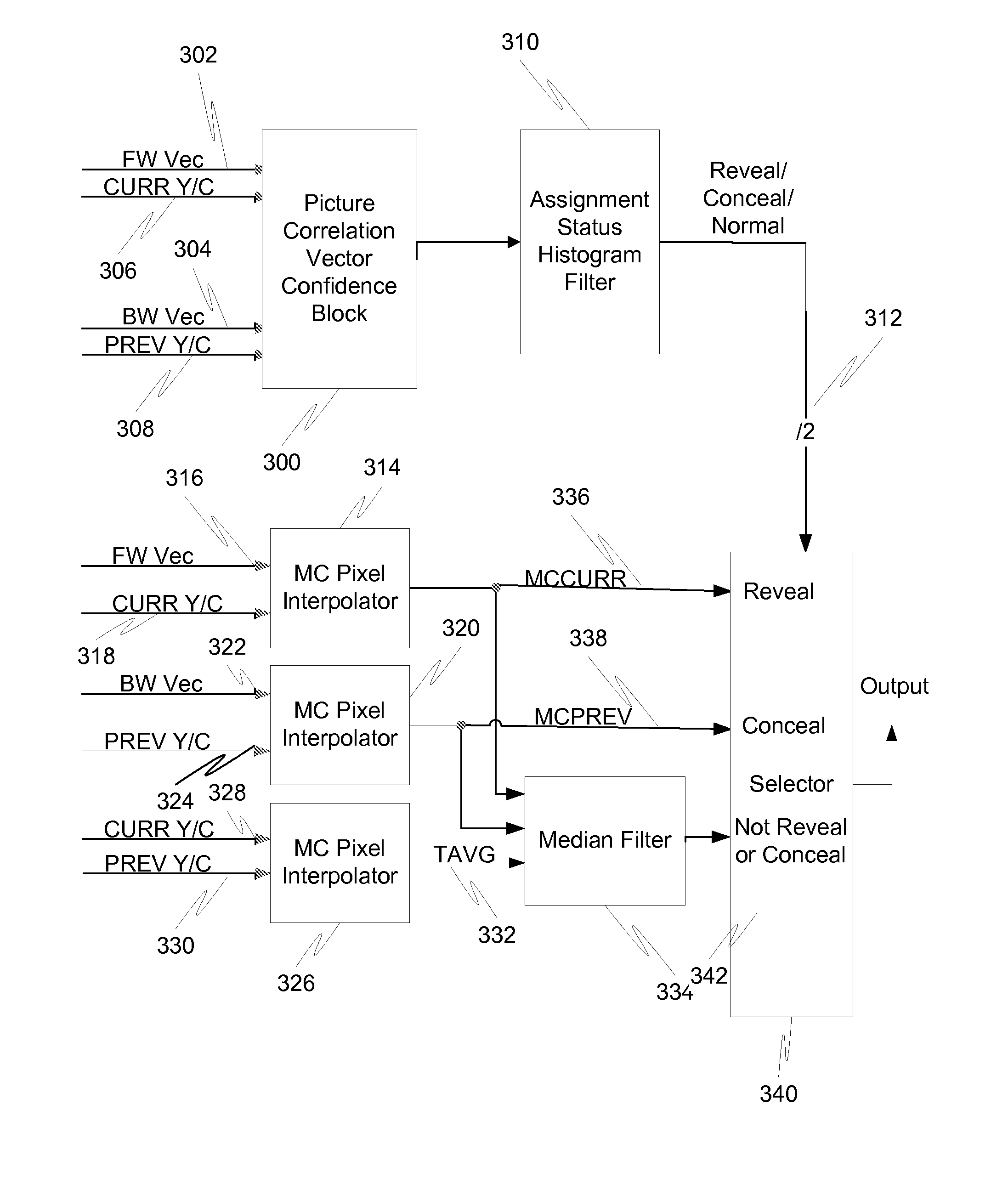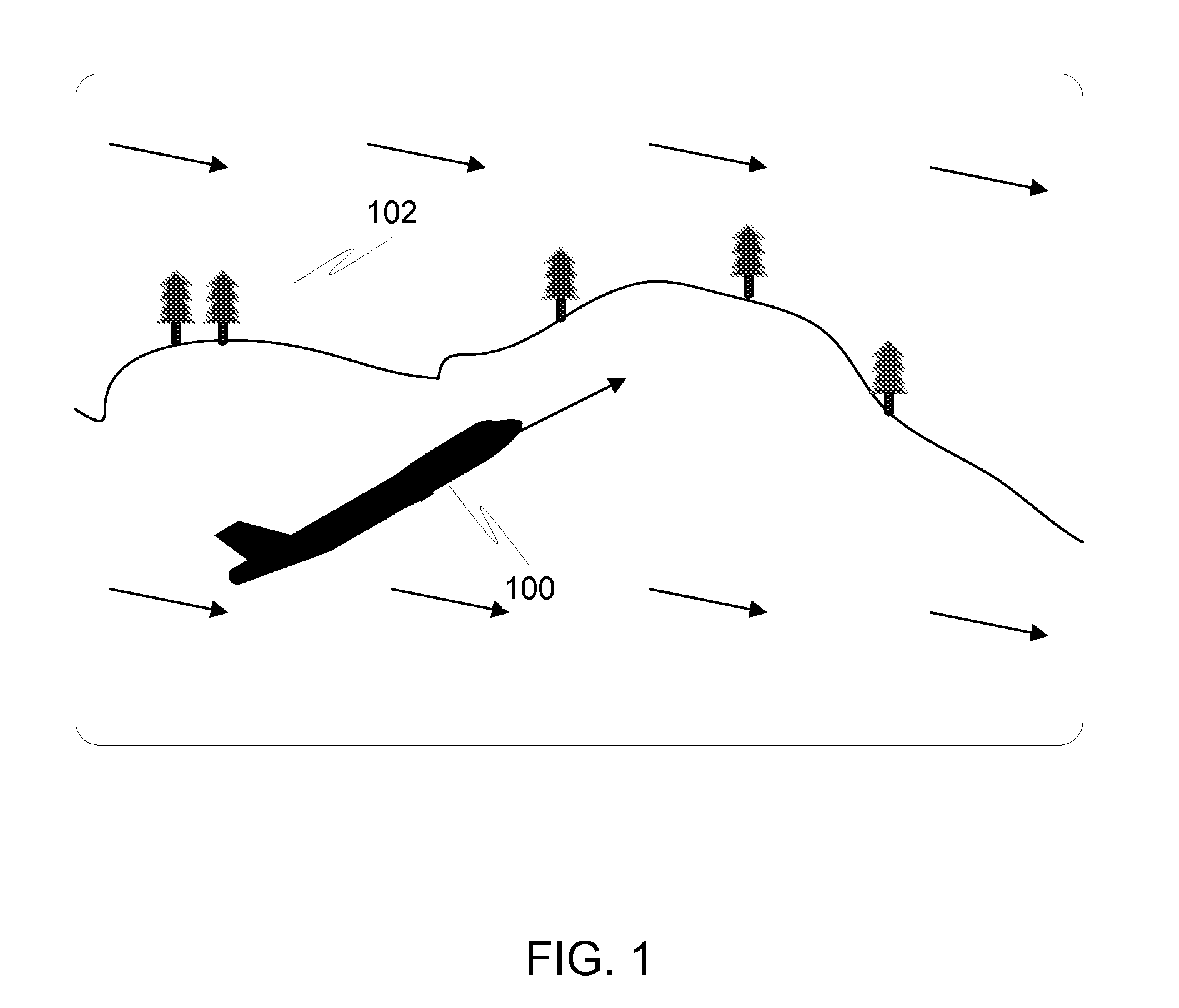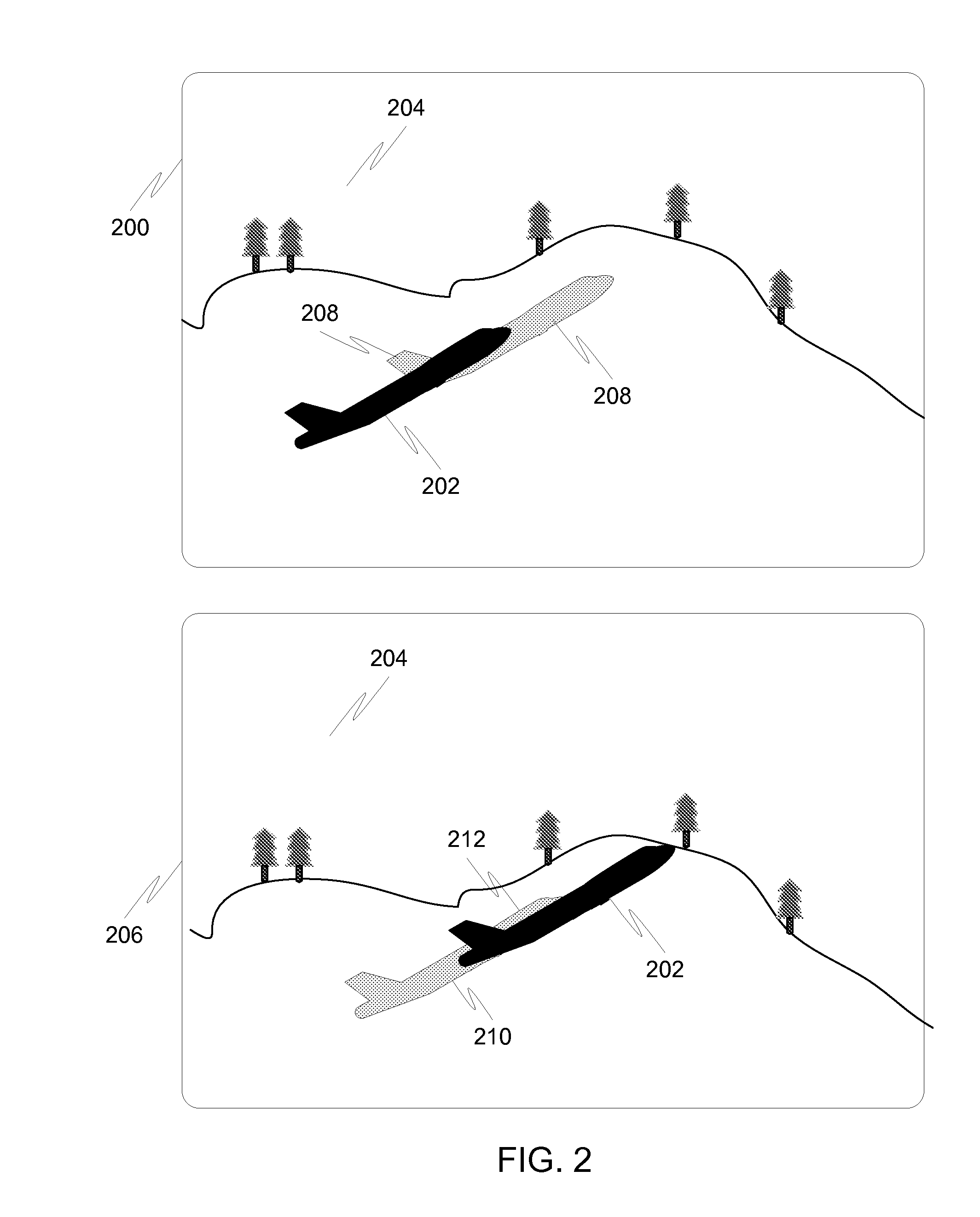Motion compensated interpolation system using combination of full and intermediate frame occlusion
- Summary
- Abstract
- Description
- Claims
- Application Information
AI Technical Summary
Problems solved by technology
Method used
Image
Examples
first embodiment
[0050]In the present invention, special care is taken to detect occlusion areas of a display as they are occurring. Specifically, the system looks for conceal areas and reveal areas. A conceal area is one where a motion compensated pixel in the previous frame does not have a corresponding match in the current frame, meaning that a moving object has covered up the pixel in the most recent frame. A reveal area is one where a motion compensated pixel in the current frame does not have a corresponding match in the previous frame, meaning that a moving object has moved away from an area of the background, revealing the background underneath. Both conceal and reveal areas are occlusion areas.
[0051]FIG. 2 is a diagram illustrating an example of conceal and reveal areas. In PREV frame 200, object 202 is in a certain location with respect to background 204. In CURR frame 206, the object 202 has moved to a different location with respect to background 204. The area 208 that the object has jus...
second embodiment
[0100]FIG. 9 is a block diagram illustrating an interpolation system in accordance with the present invention. A filtering and weighting unit 900 performs filtering and weighting on a field of input vectors. Those filtered and weighted vectors are then fed to a two dimensional histogram generator 902 that generates a two dimensional histogram of the vectors. An analysis unit 904 then analyzes the histogram for dominant vectors and estimates the background motion and the motion of any objects. Through this, a fade control signal can be generated based on the relative speed of an object. This fade control signal is fed to a blender 906, which blends output from a halo reducing interpolator 908 and a median interpolator 910 based upon the relative speed of an object.
[0101]FIG. 10 is a flow diagram illustrating a method for performing motion compensated interpolation using a previous frame and current frame of the displayable output in accordance with the second embodiment of the presen...
third embodiment
[0115]In the present invention, a camera model detects the predominant pan, rotation, and zoom parameters in a moving sequence. This information is then used to calculate a field of vectors that approximates the average motion over the whole frame. The approximate reveal or conceal areas on each edge of the frame to be interpolated are then calculated. The interpolator can use this to pull a pixel from the appropriate input frame when assembling this region. This camera model may be used in portions of the displayable area near the borders described above (the areas determined to be reveal or conceal areas), and aid in reducing or even eliminating the haloing issues caused by errors in other motion compensation algorithms.
[0116]The camera model may not, however, work very well if the movement is not caused by a pan, rotation, or zoom in a moving sequence (i.e., what appears to be a camera movement across a scene), but rather is caused by an object moving near one of the borders (e.g...
PUM
 Login to View More
Login to View More Abstract
Description
Claims
Application Information
 Login to View More
Login to View More - R&D
- Intellectual Property
- Life Sciences
- Materials
- Tech Scout
- Unparalleled Data Quality
- Higher Quality Content
- 60% Fewer Hallucinations
Browse by: Latest US Patents, China's latest patents, Technical Efficacy Thesaurus, Application Domain, Technology Topic, Popular Technical Reports.
© 2025 PatSnap. All rights reserved.Legal|Privacy policy|Modern Slavery Act Transparency Statement|Sitemap|About US| Contact US: help@patsnap.com



